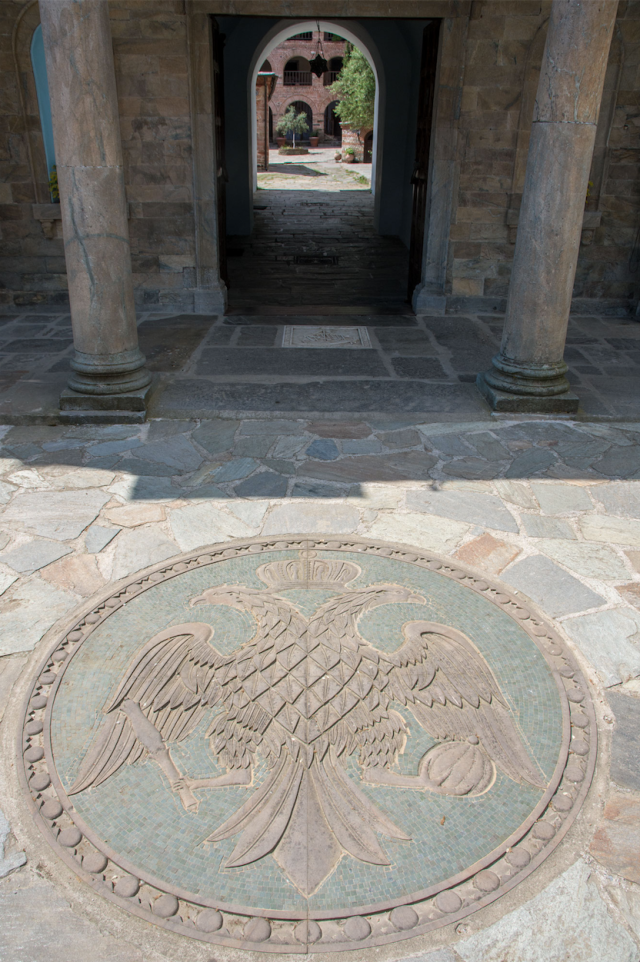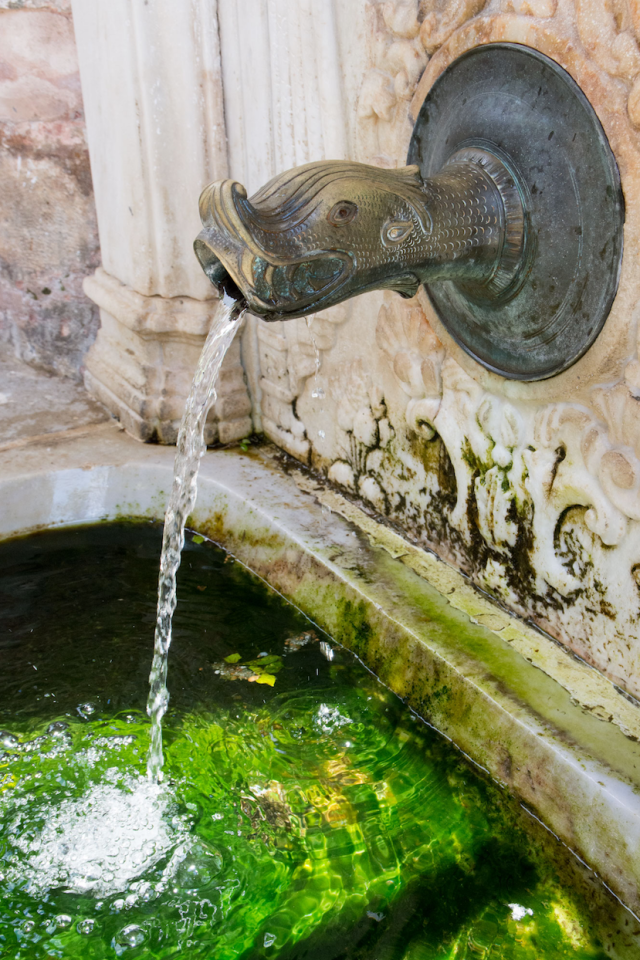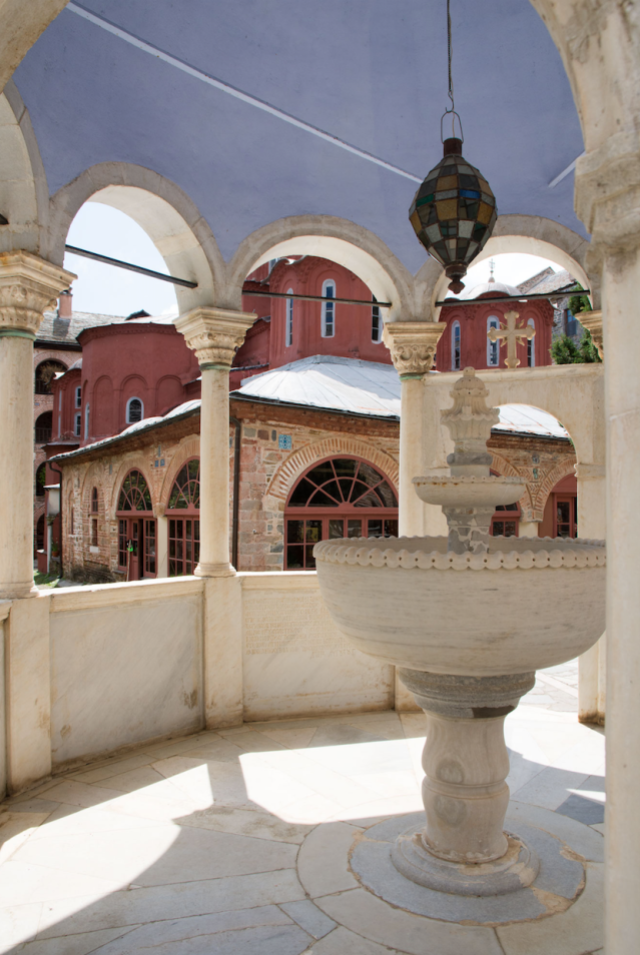 The delightful overshadowed concrete path that connects Karyes with the monastery of Koutloumousiou. On the route the yearly procession with the most famous of icons, the Axión Estin, takes place. We tried to make contact with the people in this house, but the old man had urgent other things to do.
The delightful overshadowed concrete path that connects Karyes with the monastery of Koutloumousiou. On the route the yearly procession with the most famous of icons, the Axión Estin, takes place. We tried to make contact with the people in this house, but the old man had urgent other things to do. On the pavement at the entrance of the Monastery the well-known symbol of Mount Athos and the Greek Orthodox church, the double-headed eagle, is sculpted. I have the impression that it is newly made and came with the renovation.
On the pavement at the entrance of the Monastery the well-known symbol of Mount Athos and the Greek Orthodox church, the double-headed eagle, is sculpted. I have the impression that it is newly made and came with the renovation. Opposite the double-headed eagle is a little kiosk with a fountain, that delivers delicious cool fresh water. It is delivered through a bronze fishlike monster with enormous terrifying teeth that stretches out from the carved marble stone.
Opposite the double-headed eagle is a little kiosk with a fountain, that delivers delicious cool fresh water. It is delivered through a bronze fishlike monster with enormous terrifying teeth that stretches out from the carved marble stone. The next object on the floor is an image cut out of the marble of an ancient boat, like a trireme. It might be a reference to the ancient city of Kleonia which probably was on the spot on which the monastery is right now.
The next object on the floor is an image cut out of the marble of an ancient boat, like a trireme. It might be a reference to the ancient city of Kleonia which probably was on the spot on which the monastery is right now. The lamp in the main gate with precise stucco.
The lamp in the main gate with precise stucco. The 19th century font (phiale) with a heavenly blue ceiling in the inner courtyard of Koutloumousiou. The strange, foreign sounding, name of this monastery is said to be derived from a converted Turkish prince, the son of Azeddin II Kai-Kobad (1245-57), a man called Koutloumous. See this post for more on the phiale.
The 19th century font (phiale) with a heavenly blue ceiling in the inner courtyard of Koutloumousiou. The strange, foreign sounding, name of this monastery is said to be derived from a converted Turkish prince, the son of Azeddin II Kai-Kobad (1245-57), a man called Koutloumous. See this post for more on the phiale. Another nice fountain head in the courtyard. Its claws are carved in the copper.
Another nice fountain head in the courtyard. Its claws are carved in the copper.![]() The back of the katholikon with its rhythm of windows in various sizes. Some are blocked, some are diminished or filled with well-placed bricks. I counted at least three layers of different red paint, the most used colour for katholikons. I wondered why red is the dominant colour. But I haven’t found the answer yet.
The back of the katholikon with its rhythm of windows in various sizes. Some are blocked, some are diminished or filled with well-placed bricks. I counted at least three layers of different red paint, the most used colour for katholikons. I wondered why red is the dominant colour. But I haven’t found the answer yet.
Bas Kamps

Another Very Nice Photo Essay Bas. Thanks.
I know that here in the USA, most of the barns were painted red with iron oxide paint, because it was the most inexpensive of the paints along with protecting the wood. It is possible that over in Greece, it is also the most inexpensive paint. I know that in icon paintings, red symbolized martyrs.